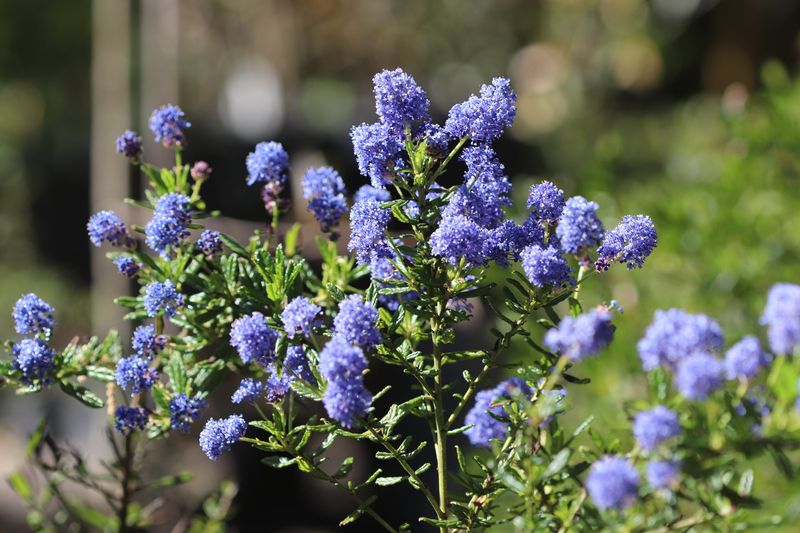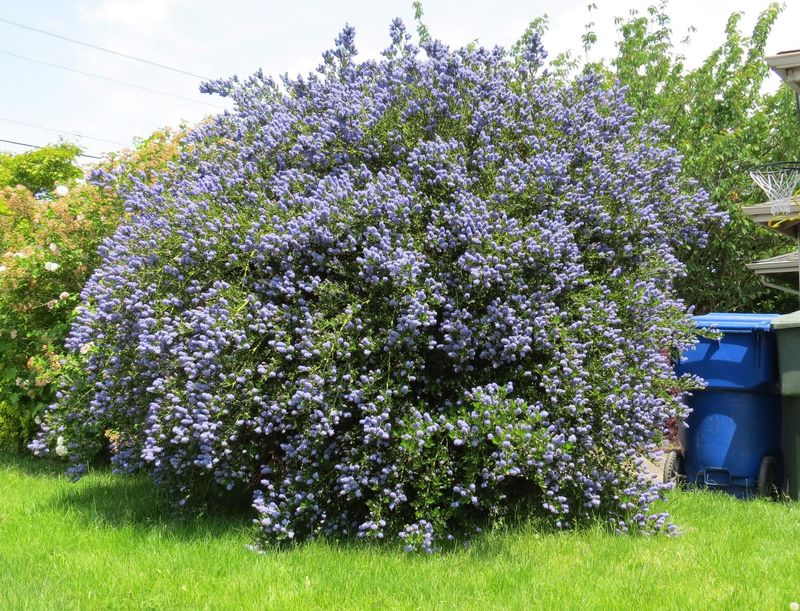Growing Ceanothus, commonly known as California Lilac, adds vibrant colors and delightful scents to any garden. These evergreen shrubs are renowned for their clusters of blue flowers and can be an excellent choice for gardeners seeking drought-resistant plants.
In this blog post, we’ll explore 11 essential tips to help you cultivate breathtaking Ceanothus plants in your own garden.
From selecting the right variety to ensuring optimal soil conditions, these guidelines will assist both novice and experienced gardeners in enjoying the full beauty of this remarkable plant.
1. Choose the Right Variety
Selecting the right Ceanothus variety is essential for success. With over 60 species available, options range from ground covers to taller shrubs. Consider your garden’s space and climate when choosing.
Some varieties, like Ceanothus ‘Concha’, are more tolerant of colder temperatures, while others thrive in dry, sunny conditions. Research each type’s growth habits to ensure it matches your gardening goals.
This thoughtful selection can lead to a more robust plant, enhancing both aesthetics and health. Achieving the perfect fit will make caring for your Ceanothus much more manageable.
2. Plant in Well-Drained Soil
Ceanothus prefers well-drained soil, which helps prevent root rot. Before planting, test your garden soil to ensure it drains promptly after watering. Add organic matter like compost to improve drainage if necessary.
If your soil tends to retain water, consider planting on a slope or raised bed. This adjustment encourages water to move away from the roots, fostering healthier growth.
Paying attention to soil conditions is a proactive step toward a flourishing Ceanothus garden. Creating an optimal environment ensures your plants remain vibrant and resilient.
3. Ensure Sun Exposure
Ceanothus thrives in full sunlight, needing at least six hours of direct sun daily. Situate your plants in a sunny spot to promote abundant flowering. Sunlight aids in photosynthesis, leading to healthier growth and robust blooms.
If your garden has limited sun exposure, choose a Ceanothus variety known for partial shade tolerance.
However, remember that more sun typically results in more vibrant flowers. By ensuring adequate sun exposure, you’ll enhance the plant’s natural beauty, making it a stunning centerpiece in your garden.
4. Water Wisely
While Ceanothus is drought-tolerant, proper watering during the establishment phase is crucial. Water deeply but infrequently, encouraging roots to grow downward and access moisture deep in the soil.
Once established, reduce watering, relying on natural rainfall. Overwatering can lead to shallow roots and susceptibility to disease. Observe your plants closely; if leaves show signs of wilting, a deep soak may be needed.
This approach fosters strong, resilient plants that thrive with minimal intervention. Watering wisely balances the plant’s needs with environmental considerations.
5. Prune Regularly
Regular pruning promotes healthy growth and a pleasing shape. Prune after flowering, removing dead or damaged wood to enhance air circulation. This process prevents disease and encourages new growth.
Use sharp, clean tools to make precise cuts, avoiding tearing. For larger shrubs, maintain a natural form rather than a formal hedge. Pruning helps direct energy into producing vibrant blooms instead of excessive foliage.
A well-tended Ceanothus becomes a stunning garden feature with minimal effort. Regular attention keeps your plants both beautiful and manageable.
6. Mulch for Moisture Retention
Applying mulch around your Ceanothus helps retain soil moisture and regulate temperature. Use organic materials like bark or wood chips, placing a layer a few inches thick around the plant base.
This practice reduces evaporation and keeps roots cool during hot weather. Mulching also suppresses weeds, minimizing competition for nutrients. Avoid piling mulch against the stem to prevent rot.
This straightforward technique significantly contributes to a healthy, thriving garden. By conserving moisture and enhancing soil quality, mulch supports your Ceanothus in reaching its full potential.
7. Fertilize Sparingly
Ceanothus generally requires minimal fertilization. Over-fertilizing can lead to excessive foliage growth at the expense of flowers. Apply a balanced, slow-release fertilizer only if your soil is particularly poor.
Conduct a soil test to determine nutrient needs before fertilizing. Focus on phosphorus to aid blooming, but proceed with caution. The goal is to supplement naturally occurring nutrients without overwhelming the plant.
By adopting a restrained approach to fertilization, you’ll encourage a balanced growth pattern, resulting in a more attractive and healthier plant.
8. Protect from Pests
While generally resistant, Ceanothus can occasionally attract pests like aphids and scale insects. Regular inspections help identify issues early. Employ natural pest control methods, such as introducing beneficial insects like ladybugs or using neem oil.
Avoid chemical pesticides, which can harm beneficial organisms. Healthy plants are less susceptible to infestations, so maintain overall plant health through proper care.
This vigilance ensures your Ceanothus remains an asset to your garden, free from damaging pests. Combining prevention with natural solutions fosters a thriving and balanced ecosystem.
9. Consider Companion Planting
Ceanothus benefits from strategic companion planting. Pair it with plants that have similar water and sun requirements, like lavender or rosemary. These companions create a harmonious garden environment, reducing competition for resources.
They also enhance aesthetics, providing contrasting colors and textures. Companion planting can deter pests naturally and support pollinators. Thoughtful plant combinations strengthen your garden’s ecosystem, promoting biodiversity.
By considering these partnerships, you enrich your garden experience, creating a lush and welcoming space. This approach maximizes both beauty and sustainability.
10. Embrace Natural Growth
Allowing your Ceanothus to grow naturally encourages a unique, informal appearance. Avoid over-pruning or altering its natural shape, as this can stress the plant. Embrace its innate characteristics, letting branches form as they will.
This method creates a more authentic look, blending seamlessly with surrounding flora. By respecting its natural growth patterns, you’ll find Ceanothus requires less maintenance while still delivering striking beauty.
This laissez-faire approach aligns with the plant’s natural tendencies, offering a relaxed gardening experience. Celebrating its wild nature enhances artistic appeal.
11. Plan for Seasonal Changes
Planning for seasonal changes ensures your Ceanothus remains vibrant year-round. Understand its blooming cycles and adjust care routines accordingly. In spring, focus on pruning and encouraging growth.
As temperatures rise, enhance water conservation and monitor pest activity. During cooler months, reduce interventions, letting the plant rest. Recognizing these natural rhythms supports ongoing vitality and beauty.
By aligning your efforts with seasonal patterns, you’ll maintain a dynamic and engaging garden landscape. This proactive planning fosters a resilient garden, ready to face any climatic challenges.











